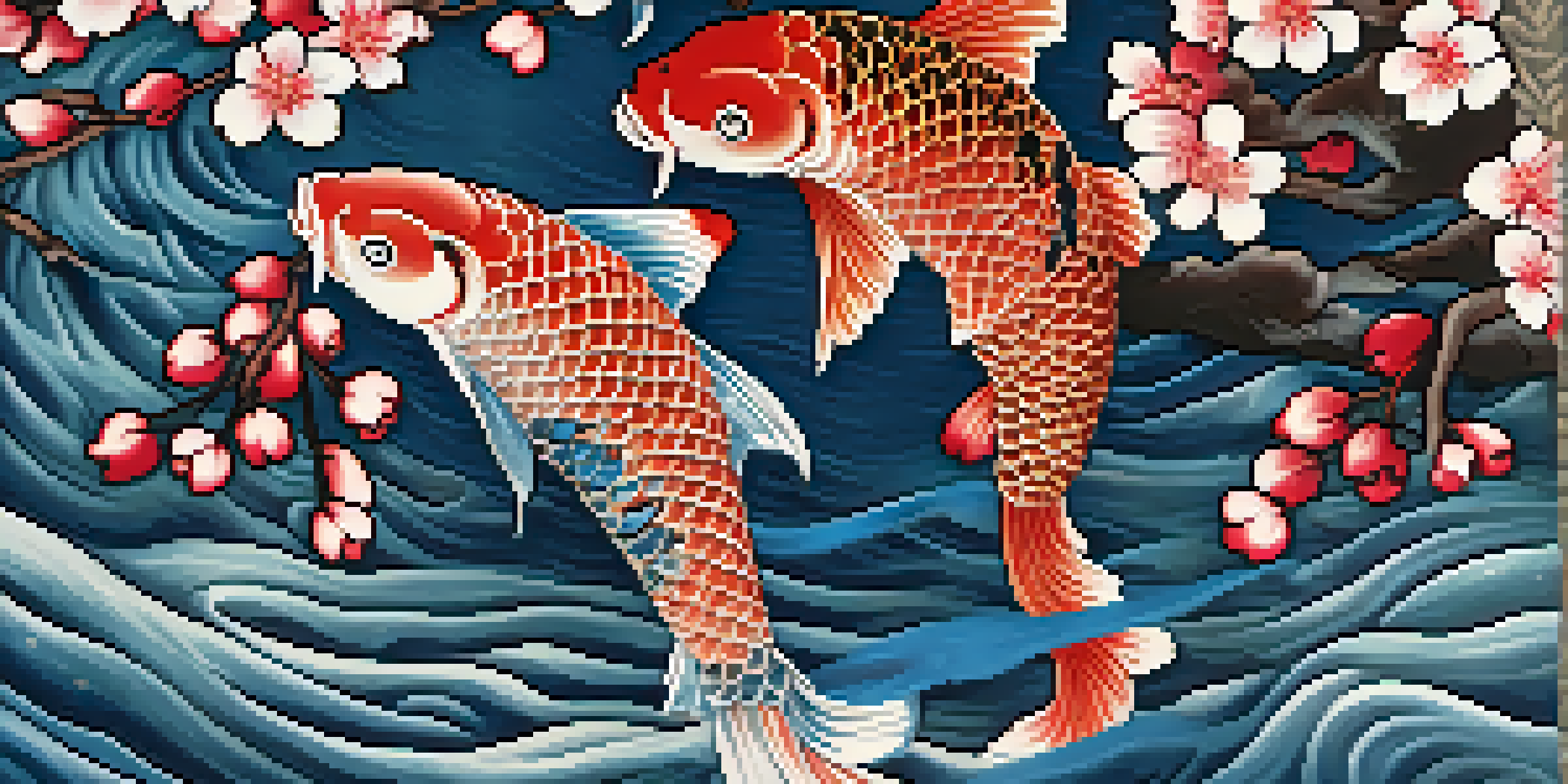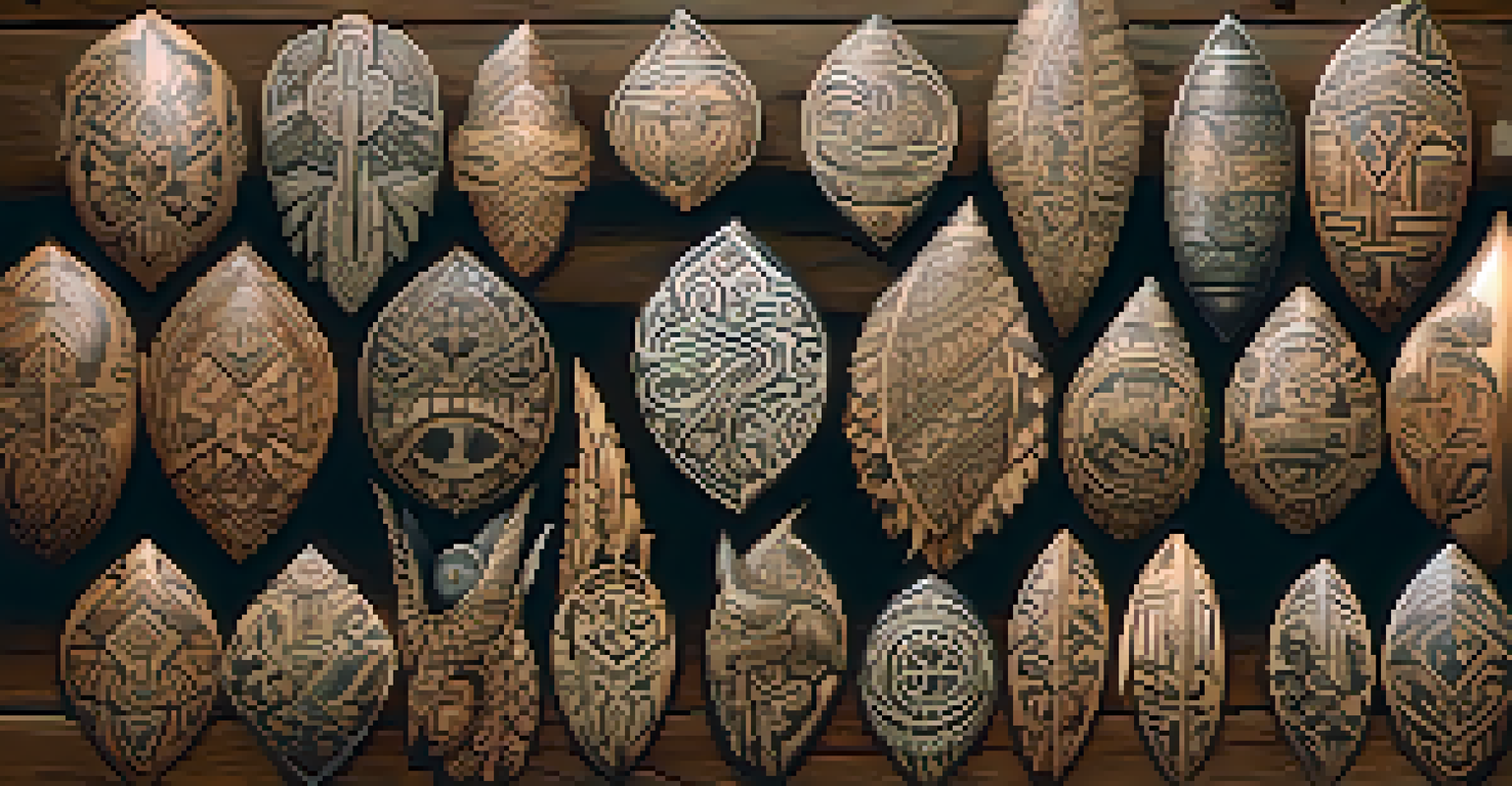The Evolution of Tattoo Styles: Past, Present, and Future

The Origins of Tattooing: A Historical Perspective
Tattooing has ancient roots, tracing back over 5,000 years. Early civilizations, like the Egyptians and Polynesians, used tattoos for various reasons, including religious beliefs and social status. These markings often held deep meaning, serving as rites of passage or symbols of protection.
Tattoos are like stories; they are symbolic of the important moments in your life.
In the context of tribal cultures, tattoos were a way to convey identity and group affiliation. For instance, the Maori of New Zealand developed intricate facial tattoos called Ta Moko, which told stories of their lineage and achievements. This historical significance laid the groundwork for the art of tattooing as we know it today.
As time progressed, the practice spread across different cultures, adapting to societal norms and artistic styles. The evolution from these early practices to more contemporary forms illustrates the dynamic nature of tattoo art and its enduring relevance.
Traditional Tattoo Styles: Cultural Significance and Techniques
Traditional tattoo styles often reflect the cultural heritage of a society. For example, Japanese tattoos, known as Irezumi, feature elaborate designs that tell stories of folklore and mythology, often taking years to complete due to their complexity. Each motif carries its own symbolism, highlighting the tattoo's role as both art and narrative.

Similarly, American traditional tattoos, characterized by bold lines and vibrant colors, emerged in the early 20th century among sailors and soldiers. These tattoos often featured iconic imagery such as anchors and eagles, representing courage and adventure. This style not only marked personal milestones but also created a sense of camaraderie among those who bore them.
Tattooing's Rich Cultural History
Tattooing has deep historical roots, serving various purposes across different cultures for over 5,000 years.
These traditional styles remind us of the rich narratives behind tattoos, showcasing how they serve as cultural artifacts. They also emphasize the importance of storytelling in tattoo art, connecting the past with the present.
The Rise of Modern Tattoo Trends: Influences and Innovations
In recent decades, tattoo culture has transformed dramatically, influenced by pop culture, social media, and a growing acceptance of body art. Today, tattoos are not just expressions of individuality; they have become fashion statements and forms of self-expression. Celebrities proudly displaying their ink have played a huge role in normalizing tattoos across various demographics.
A tattoo is a true poetic creation, and is always more than meets the eye.
Modern tattoo styles, such as watercolor and geometric tattoos, showcase innovative techniques that push artistic boundaries. Watercolor tattoos mimic the appearance of a painting, while geometric patterns focus on symmetry and precision, appealing to those who appreciate modern art. These styles reflect a shift towards more personalized and unique designs.
This evolution signifies a broader acceptance of tattoos as an art form rather than mere body modifications. As society continues to embrace diversity and creativity, the landscape of tattooing will likely evolve even further.
The Role of Technology in Tattooing: Tools and Techniques
Technology has revolutionized the tattoo industry, enhancing both the tools artists use and the overall experience for clients. Modern tattoo machines have made the process faster and more precise, allowing artists to achieve intricate designs with ease. Additionally, advancements in sterilization techniques ensure a safer environment for getting inked.
Moreover, digital design software enables tattoo artists to create detailed mock-ups, giving clients a clearer vision of the final product. This not only enhances communication between the artist and client but also allows for more creative freedom in design. Artists can experiment with various styles before committing to a permanent piece of art.
Modern Trends and Personalization
Today's tattoos reflect personal expression and creativity, influenced by pop culture and innovative techniques.
As technology continues to evolve, we can expect even greater innovations in tattooing. From augmented reality previews to 3D printing of temporary tattoos, the future of this art form is poised for exciting developments.
Tattoo Styles Across Cultures: A Global Perspective
Tattoo styles vary widely across the globe, each telling a unique story influenced by cultural beliefs and traditions. For instance, in Africa, tribal tattoos often symbolize rites of passage or signify membership within a community. These tattoos serve as powerful markers of identity, connecting individuals to their heritage.
In contrast, contemporary Western tattoo styles often focus on personal expression and individuality. The rise of personalized designs, such as quotes or portraits, reflects a shift towards tattoos as individualized art rather than cultural symbols. This highlights the evolving nature of tattoos as they adapt to societal changes.
Exploring tattoo styles from different cultures reminds us of the rich tapestry of human experience. Each tattoo not only has artistic merit but also carries layers of meaning that reflect the values and beliefs of the society from which it originates.
The Future of Tattoo Styles: Trends and Predictions
Looking ahead, the future of tattoo styles is likely to be shaped by ongoing cultural shifts and advancements in technology. As society continues to embrace diversity, we may see a rise in hybrid styles that blend different cultural elements, creating unique and personalized designs. This fusion could lead to more innovative expressions of identity through tattoos.
Additionally, the increasing popularity of temporary tattoos and body art alternatives may change how people perceive permanent ink. As more individuals explore their options, we might witness a shift towards more experimental designs that reflect current trends, allowing for greater artistic freedom without long-term commitment.
Importance of Tattoo Care
Proper tattoo care is essential for maintaining its vibrancy and longevity, ensuring it remains a source of pride.
Ultimately, the future of tattooing will be defined by the interplay between tradition and innovation. As new styles emerge and societal attitudes evolve, the art of tattooing will continue to thrive, offering endless possibilities for self-expression.
Tattoo Care and Maintenance: Best Practices for Longevity
Caring for a tattoo is crucial to ensure its longevity and vibrancy. After getting inked, it's essential to follow aftercare instructions provided by the artist, which often include keeping the area clean and moisturized. Proper care not only prevents infections but also helps maintain the tattoo's appearance over time.
In addition to immediate care, long-term maintenance plays a significant role in preserving a tattoo's quality. This includes protecting the tattoo from excessive sun exposure, which can cause fading, and moisturizing the skin regularly. Regular touch-ups can also help refresh the design and keep it looking sharp.

By prioritizing tattoo care, individuals can enjoy their body art for years to come. Understanding the importance of maintenance ensures that tattoos remain a source of pride and expression rather than a faded memory.